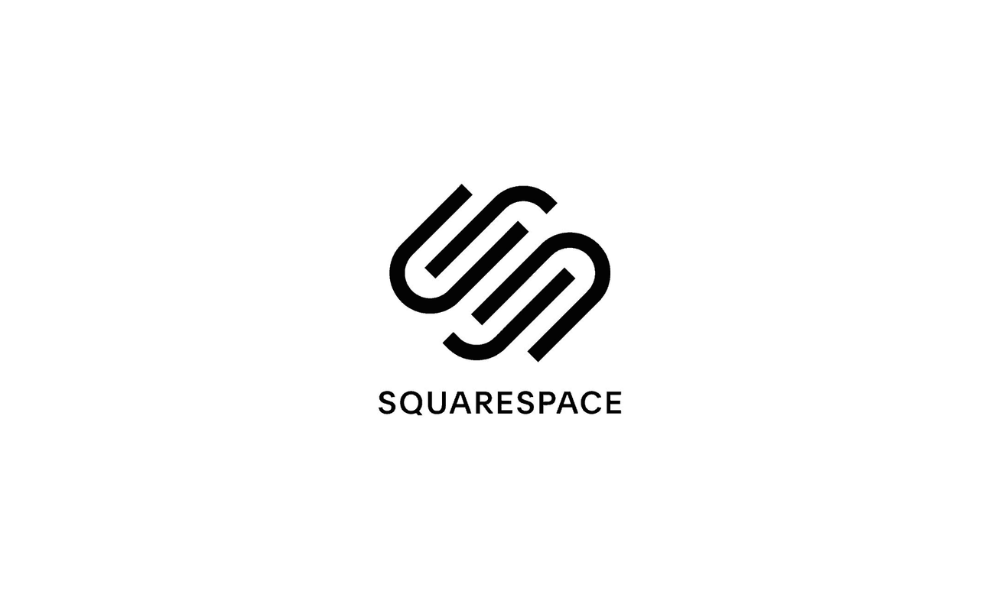Thinking of launching an online store with Squarespace for e-commerce?
Congratulations! Squarespace has become one of the favorite options among entrepreneurs and startups to start their business adventure – even ahead of Shopify, WooCommerce or Magento.
“Show yourself as an expert from the start. This is the slogan of the Spanish version of Squarespace, whose technology has been used to create 1.8 million websites, according to BuiltWith data.
However, the origins of Squarespace go back 15 years in time, two years before the launch of giants like Shopify. Its evolution has been different, less triumphant, but no one doubts that Squarespace for e-commerce is an excellent choice.
In the following lines, we will go deeper into the review of Squarespace, with special mention of its plans, features, design options and all its secrets. Are you going to miss them?
What is Squarespace for e-commerce?
Squarespace is an e-commerce platform designed to facilitate the creation of websites and online stores, with domain registration and web hosting included.
Its value proposition is similar to BigCommerce, Shopify and other platforms like it: to offer pre-designed templates but of great quality and versatility, to speed up the development of personalized websites.
Rather than ‘speeding up’ this process, Squarespace aims to make online store design accessible to all audiences. Unlike WordPress, Squarespace does not have a downloadable version, although it does offer different tools for exporting data.
The team behind Squarespace also preaches by example, as their entire business employs the same technology they offer their customers, who number in the hundreds of thousands around the world.
“We build products and design experiences that we would like to have for ourselves,” Squarespace says, emphasizing in their values “design (quality) is not a luxury”.
This is one of the keys to Squarespace’s success for e-commerce. Although it is a paid service (both the Basic and Advanced plans have a cost), its prices are cheaper than Shopify and other services, without affecting the final quality.
For Anthony Casalena, ‘father’ of Squarespace, the objective of this platform is clear: to be able to build an online store, from beginning to end, without any technical knowledge. However, their customers have access to style languages such as CSS, for further customization.

As if that weren’t enough, the Squarespace platform for e-commerce is responsible for everything related to hosting, domains and web servers – everything for your customers to concentrate on designing your online store and start selling!
It was in 2003 when Casalena developed Squarespace while attending the University of Maryland (United States). Although until 2007 he was the only employee of this company, today it has a staff of more than 880 people.
Contrary to what happened with Twitter and other digital ventures, Squarespace knew profitability from the beginning, thanks to the good management of Casalena and his team.
We trust that this brief definition of Squarespace for e-commerce has put the worm in your body. Do you want to launch your own online store with this platform, then do not miss the following keys!
What are the steps to follow to succeed with Squarespace for e-commerce? Discover them!
After this first contact with Squarespace, do you want to discover all the keys to success?
Every day you create stores with Squarespace, but not every day you create successful stores with this platform. If you want yours to be, don’t miss the following lines.
Step 1. Select the plan that best suits your business
One of the most widespread errors on Squarespace? Start your e-commerce with a plan that is too expensive or with insufficient features to grow.
By clicking on ‘prices’ at the bottom of your website (footer), we access the Squarespace plans section. In our particular case, we must click on the ‘Online Shops’ tab.
Below we recognize two plans with different prices and features. Let’s look at them separately:
-
Basic Plan:
For obvious reasons, this is the most popular plan among Squarespace customers. It costs 28 euros per month with the monthly contract (the advantages of the annual contract will be explained later).
To tell the truth, the features of Squarespace’s most basic plan are pleasantly surprising: selling an unlimited amount of products without commissions for transactions, having a web optimized for mobiles or creating unlimited customer accounts.
As if that weren’t enough, this plan has very interesting additions: access to accounting via Xero, sale of Instagram products, SSL security, 24/7 support, e-commerce metrics or free personalized domain (with the annual subscription of the plan).
-
Advanced Plan:
Another of Squarespace’s most interesting e-commerce plans is the Advanced. It costs 42 euros per month and offers features designed for more ambitious companies.
To the advantages of the Basic plan, incorporates the possibility of creating lists of subscriptions, recovery of abandoned shopping carts, advanced shipments, discounts to customers, gift cards or API for orders.
With the annual subscription, the Squarespace price for e-commerce is more affordable. In this way, the monthly cost of the Basic plan becomes 24 euros, while the Advanced plan drops to 36 euros.

It is important to select the most appropriate plan, with the quality-price ratio that best suits our business! Will it be the Basic plan or will it be the Advanced plan? Only you can answer this question.
Step 2. Select (with success) one of the 11 available templates
As far as the variety of templates is concerned, Squarespace cannot compete with WooCommerce, Shopify or other commercial rivals.
Specifically for online stores, this platform has only 11 templates. (For web design in general, however, has a broader catalog, as noted, Squarespace is not a platform focused 100% e-commerce).
Squarespace templates for e-commerce include Foster, Brine, Fairfield, Cacao, Jaunt, Clay, West, Hyde, Mars, Thorne and Pedro. All of them stand out for their simple, sober, elegant design without excessive adornments, almost bordering on minimalism.
Certain online reviews suggest that Squarespace templates are one of its greatest strengths, but this is not entirely true. Its competitors offer added value in this sense, not in quality but in variety.
However, we will underline that Squarespace templates are a solid basis for developing incredible e-commerce – but you must choose carefully, as a bad decision could complicate the development of your design a lot.
Step 3. Upgrade your stock of products and customize them
Following the review of Squarespace for e-commerce, another of the strengths of this platform is its tools to classify, organize and manage an unlimited catalog of products.
Managing labels and categories is easy and fast, and therefore this step will be developed faster than expected. In addition, Squarescape allows you to modify the visibility of the products, in case you want to design their cards, without launching them on the market yet.
When organizing stock, Squarespace allows the use of variants and SKUs. In this way, all products will be easily located. These codes will also greatly speed up the management of shipments and other administrative procedures.
In addition, in Squarespace for e-commerce, it is possible to sell different types of products, in addition to the physical ones: software, digital books, etc.
Although this last feature will not be useful to all e-commerce stores, it is important to know the full potential of this platform.
Step 4. Make your product cards look amazing
The best e-commerce stores take special care in their product cards, and Squarespace shines with special intensity in this section.
Your customers have pre-designed templates to improve sales, so they don’t need to develop their own product cards from scratch. It is possible to publish image galleries, videos, images, and detailed descriptions.

For the most demanding e-commerce stores, Squarespace has some very interesting advanced features.
For example, by activating Quick View on the products, it is possible to zoom in on the images, a resource that enhances UX and therefore encourages conversions.
Step 5. Take advantage of Squarespace’s design options
But product cards are not the only aspect with multiple customization options.
As mentioned above, all templates on the Squarespace e-commerce platform stand out for their minimalist style. But this doesn’t mean that they can’t be enriched with various add-ons.
Squarespace and its technology have great flexibility. It is possible to add HTML blocks and make advanced style changes (CSS). Obviously, Squarespace modifications have a limit, as do Shopify and certain WooCommerce templates.
These limitations must be assumed when working with predefined templates and themes. They are an excellent way to launch an online store quickly. But their personalization and exclusivity cannot be compared to the ab ovo creation of an e-commerce without the help of platforms.
However, it is important to emphasize that the predefined Squarespace templates are an excellent base to start with, without the need to make big changes.
For e-commerce stores, starting their commercial odyssey, devoting too much effort to design and other details could hamper their performance in other more important areas.
Step 6. Become Familiar with Inventory Management at Squarespace
Shopify, BigCommerce, and WooCommerce have their own inventory managers, as does Squarespace.
The platform we’re dealing with is simple, but you need to familiarize yourself with its interface and options. With Squarespace, it’s easy to send notifications, keep reservations up to date and carry out other essential tasks in stock management.
In addition, Squarespace is compatible with external services such as ShipStation. For customers, this platform also provides a rate calculator from FedEx, UPS, and other logistics companies, so there is no misunderstanding when estimating the final price of the order.
To extend this information, you should know that this e-commerce platform has plenty of information on the support services on Squarespace (support.squarespace.com).
In this section, you’ll find useful guides, articles, and videos, as well as a community forum, perfect for personal questions.
If you want to ask your questions about stock management to the Squarespace team, you will find an online contact form in this section. Also, your Twitter profile (@SquarespaceHelp) will answer in a few hours any question related to their services.
Step 7. Customize one-page checkouts (but resign yourself to offering few payment options)
In e-commerce, there are two designs for checkout pages: multi-step and one-page. Both are widely used and offer excellent results.
Squarespace for e-commerce has one-page checkouts, optimized to improve conversions, even among mobile consumers. It is an excellent design, which can also be customized with the logo, typography and color palette of your commercial branding.
But Squarespace fails in the most important aspect of the checkout page: the payment options. It is only compatible with a small number of payment gateways.

It is true that Stripe, PayPal, Venmo, Apple Pay and the main credit cards can be integrated. But Squarespace is in a very bad way if we compare this small number of payment options with Shopify, for example, which allows you to use more than 100.
Several studies have revealed that a scarce number of payment options is behind a part of the abandoned carts in e-commerce. Thus, Squarespace does not shine with special intensity in this section.
Step 8. Use CRM and other tools to build customer loyalty
Another of Squarespace’s strengths for e-commerce is its marketing tools, perfect for connecting with our consumers and building their loyalty.
For example, in Squarespace, you can take advantage of customer subscriptions.
What exactly do you sell, an annual product pack, a monthly delivery of select products? Whatever it is, this platform adapts to your needs. Managing them is easy and fast.
One of the best ‘friends’ of online stores is customer relationship management (CRM). Squarespace integrates one of these tools, perfect for gathering useful information about our customers: average order value, their order history, etc.
In addition, Squarespace surprises its customers by offering a tool for recovering abandoned shopping carts.
As you probably know, e-commerce shopping cart abandonment rates are around 70-85% approx. This is the ‘black beast’ that all online stores must fight, and so the Squarespace tool is perfect for sending reminders and encouraging them to ‘rescue’ all those purchases they left unfinished.
Step 9. Enrich Squarespace metrics with Google Analytics
The best e-commerce stores understand the importance of data collection and analysis, and so Squarespace offers its customers a number of basic metrics.
But here’s your problem: they’re too basic for today’s online store needs. Monitoring revenue, orders, units sold and other similar data is useful from a superficial point of view.
But what was the average length of sessions over a given period, which products or categories produced the most bounce rates? The answer to these questions can be found in Google Analytics.
Integrating Google Analytics into Squarespace does not have any major difficulties. Let’s look at the next steps:
- In Squarespace, click on Settings and then Advanced, then select the external API keys.
- Then enter the corresponding ID in the box called Google Analytics Account Number.
Knowledge is power. The e-commerce stores should be in contact with the most important metrics of their business and strive to optimize them month after month.
Of course, one of those aspects that could not be missing in this review of Squarespace for e-commerce.
Step 10: Your Squarespace store is secure and your customers need to know about it!
When it comes to cybersecurity, Squarespace has little to envy of its competitors.
Needless to say, online consumers need to trust online stores. It is precisely the lack of trust that is one of the factors behind the high rates of cart abandonment in e-commerce.
This platform enables HSTS Secure, an additional security layer that ensures connection encryption and actively prevents attackers from gaining access.
Squarespace also has a secure payment system, backed up by a 128-bit SSL certificate (secure sockets layer). Thanks to this security measure, your e-commerce guarantees an optimal connection with your clients’ browsers, without third parties (hackers, for example) being able to interfere.
In view of the above, Squarespace for e-commerce has little to envy Shopify, WooCommerce, Magento, 3dcart and other successful platforms.
However, we recommend you not to rush into choosing Squarespace to launch your online store. This decision should not be taken lightly. It is important to perform a comparative analysis that shows the pros and cons of this and other platforms.
Success in e-commerce does not only depend on the product, the service or the market niche the e-commerce platform also influences (and a lot).





